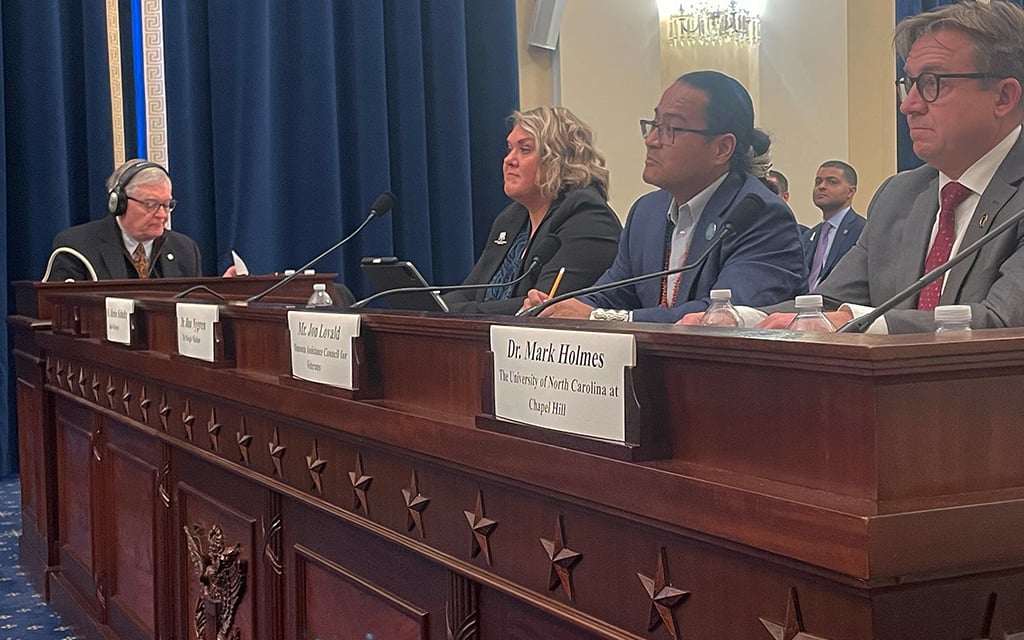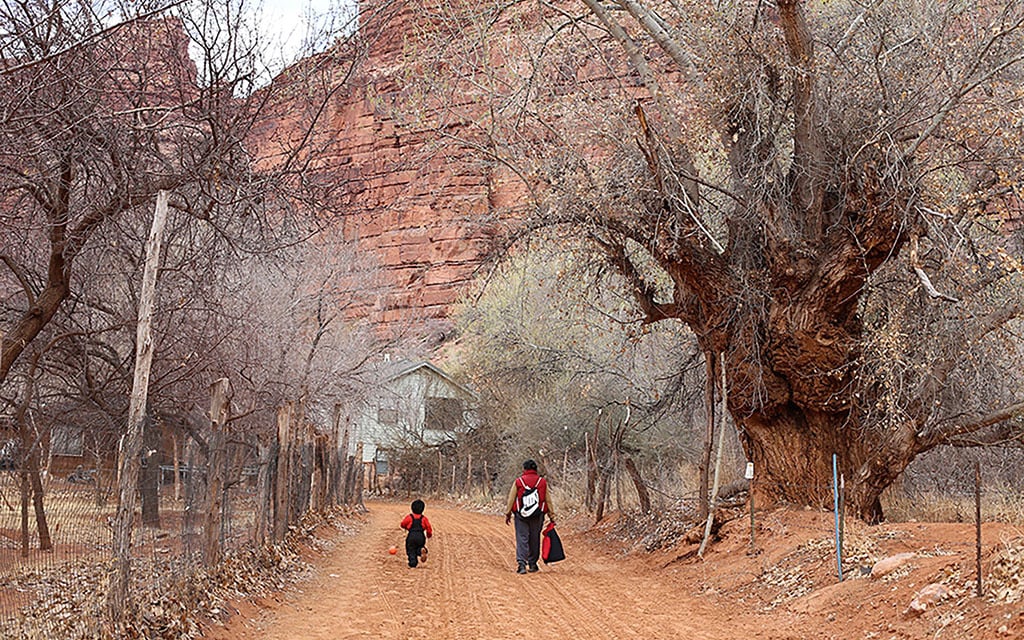WASHINGTON – Navajo Nation President Buu Nygren called on lawmakers Thursday to put Veterans Affairs medical and benefits centers on the reservation to help deliver services that he said Indigenous veterans have earned but often cannot access.
“The lack of VA care in the Navajo Nation is not reflective of the continuous contributions the Navajo people have provided to this country,” Nygren in testimony to the House Veterans’ Affairs Committee.
“Our veterans have earned the right to accessibility, quality care and benefits for their service and sacrifice. It is for these reasons I ask Congress to work with my administration to bring a full-service VA medical center to the Navajo Nation,” he said.
Nygren was one of several witnesses from around the country testifying on the challenges the VA faces in delivering services to the millions of veterans who the department said live in rural areas.
Witnesses cited similar problems that they said hinder the delivery of services to vets in remote areas, including scarce VA resources that are made more inaccessible by a lack of transportation and poor broadband service, among other issues.
“We’ve got 27,000 square miles, almost half a million people who live in some very remote areas,” Nygren said after the hearing. “A lot of these veterans have to travel a lot of hours just to get services in either Phoenix, Albuquerque or Salt Lake City.”
The warm reception advocates got from lawmakers was in stark contrast to the treatment of VA administrators, who spent the first part of the three-hour hearing touting the progress they said they agency has made in delivering services.
VA Under Secretary for Health Shereef Elnahal said that 25,000 rural veterans were among the more than 100,000 vets added to department rolls since 2022 under the PACT (Promise to Address Comprehensive Toxics) Act.
“In addition to better staffing in rural areas, the VA meets the needs of even more rural veterans by providing telehealth services, mobile clinics, and transportation services,” Elnahal said. “During the fiscal year 2023, the VA delivered more telehealth services than in any fiscal year before including more than 2.9 million episodes of care delivered to more than 770,000 rural veterans.”
But many lawmakers on the panel were like Rep. Mariannette Miller-Meeks, R-Iowa, who told the VA officials to “color me unimpressed.”
“It’s very apparent to me when I talk to veterans in my community that the Mission Act is not being implemented by the VA,” Miller-Meeks said, referring to the law that requires the department to deliver care to veterans in a certain time frame.
“That became readily apparent when we had out hearing on residential mental health and substance abuse disorder where the VA didn’t even think residential mental health and substance abuse feel into the parameters of the mission,” she said.
While they had complaints for the VA administrators, lawmakers were more likely to offer the advocates suggestions for potential solutions.
“Have we given thought to a possible joint facility with the VA and the IHS (Indian Health Service) so that the Navajo people could benefit from the economy of scale and to make it a much fuller array of services?” asked Rep. Mark Takano, D-Calif. “The best way to justify that would be to open it up to both the IHS beneficiaries as well as VA beneficiaries.”
Nygren said that sounded like a “great idea.”
Nygren also pointed to other initiatives, including a potential partnership between the Navajo Nation and a new medical school planned for Northern Arizona University, in order to help provide the nation with doctors and nurses. He said he is working with Rep. Eli Crane, R-Oro Valley, to “find out if there is some sort of program that can be worked out (with NAU) that can be geared towards Navajo nurses and doctors that are closer to Navajo.”
After the hearing, Nygren said a VA medical center would help “the physical, mental and emotional health of our veterans” while a VA benefits center “is a great way for our veterans to really start utilizing some of the benefits that the VA does have to offer.”
“It would be nice to have another Navajo person be able to sit down with them and talk to them and walk them through everything because sometimes, it can be a lot of culture shock when you’ve got to travel to these other places and you’re not sitting across the table from someone that looks like you,” Nygren said.




